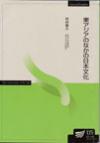
Murai Shosuke 村井章介
Tokyo: Hoso Daigaku Kyoiku Shinkokai, 2005
Reviewed by Mitani Hiroshi, Professor of the Graduate School of Arts and Sciences, the University of Tokyo, Japan
The title of this book is misleading. This is actually an international history of East Asia from the 7th to the 17th century, mainly focused on Japan’s relations with neighboring areas: China, the Korean peninsula and the archipelago in the North-Western Pacific. It begins with the Japanese missions to Tang dynasty China and ends with the Korean and Japanese responses to the transformation from the Ming to Qing dynasties of the Chinese empire. This book can be called the first comprehensive regional history of East Asia before the modern era, as viewed from the periphery of the Sinic world.
Author Murai Shosuke (1949-, Professor of the Graduate School of Humanities and Sociology, the University of Tokyo) is one of the leading historians of East Asian international history today. Although he began his career as a specialist of Japanese medieval history, his paper in 1985 (included in his book “Medieval Japan in East Asia” 1988) opened a new horizon of East Asian regional history. He suggested looking at the area from the viewpoint of maritime activities instead of that of landed states. This led him to the discovery, through careful reading of Korean and Chinese materials along with Japanese manuscripts, that the so-called “Japanese pirates” who attacked the coasts of Koryo and Ming from the 14th to 16th century in fact comprised multi-ethnic groups who played as significant a role in East Asian trade as did official commerce among governments.
The book under review represents a synthesis of his numerous monographic works. It is not an ordinary textbook that describes major political and military incidents in chronological fashion. Rather, it focuses on various incidents of cultural and commercial exchanges which illuminate the international relations of East Asia that contributed to the construction of Japanese culture. One of the most impressive chapters concerns the ceremonial exchanges of Chinese poems between Japanese intellectuals and the envoys from Bohai, the country situated from the 7th to 10th century in the territory of today’s North East China and Coastal Siberia. It clearly shows the fact that both countries shared in the Tang dynasty’s culture so as to testify to their own development as civilized peoples. Yet, we cannot help being moved in reading the poems of farewell which they exchange. Although both sides composed them in a diplomatic competition, they also expressed personal feelings as to whether they would be able to see each other again. Bohai has been long forgotten. But, we can vividly imagine its existence from these poems.
Readers will receive a similar impression from an episode concerning the third Shogun of the Kamakura era, Sanetomo. Although his attempt to visit China stretched credibility, we are convinced that he was serious in this desire by reading his Japanese poems and by the author’s explanation of them: the combination of cultural intimacy with China mediated through Zen Buddhism with the domestic politics that alienated Sanetomo from political struggles.
Murai repeatedly stresses Chinese influence on Japanese culture during the periods of the Song and Yuan dynasties. Both Zen and Tea ceremony were cultural imports from China. Japanese aristocrats enjoyed them because they were exotic. Yet, they became ‘Japanese’ later. The author indicates that the Ming’s policy of closing off relations with neighboring societies must have influenced this process of indigenization. As the trade across the East China Sea declined due to Chinese policy, it became difficult for Japanese monks to visit China to learn from its advanced culture. It is noteworthy that the author points out those elements of so-called Japanese culture which emerged from this transformation of international context and which must have been shared by other peripheral societies of China.
Yet, Japanese elites could not sever their ties with the Ming dynasty. Because the Ming limited its relations with neighboring societies to official relations among governments, some political leaders sought tributary status from the Ming. Contrary to the tradition of Japanese kings who had avoided becoming the vassals of Chinese emperors except during the 5th century, a son of emperor Godaigo and then Muromachi shogun Yoshimitsu were both granted the appellation of ‘Japanese king’ by the Ming emperors. Understanding of Yoshimitsu’s acceptance of this appellation differs among researchers, especially on the question of whether he sought it as a means to become a Japanese king. Murai supports the view that Yoshimitsu indeed meant to usurp the status of Japanese emperor.
One of the characteristics of this book is the wide use of archeological findings: Chinese pottery and ceramics discovered in Hakata, the main port of Japanese foreign trade on Kyushu island from the ancient to the medieval period, and the remains of kilns in an island between Kyushu and Ryukyu that suggests a commercial route between Ryukyu and Korea by way of Japanese ports on Kyushu island, as do sunken ships on the coast of South Western Korea, etc. Murai utilizes these findings along with documents from Korea, China and Japan to show that marine transportation had established close ties across the East China Sea from the ancient period. Also, he stresses the fact that the majority of the ships and peoples engaged in these activities did not exclusively belong to a single country on land.
This book requires some detailed knowledge of Japan’s pre-modern history if readers are to fully understand it. Yet, it is worthwhile for all those who are interested in East Asian history as a whole to read through this thousand year history. It is a masterpiece written in a clear style with many interesting photographs and maps. It opens for us a new horizon for East Asian regional history.
